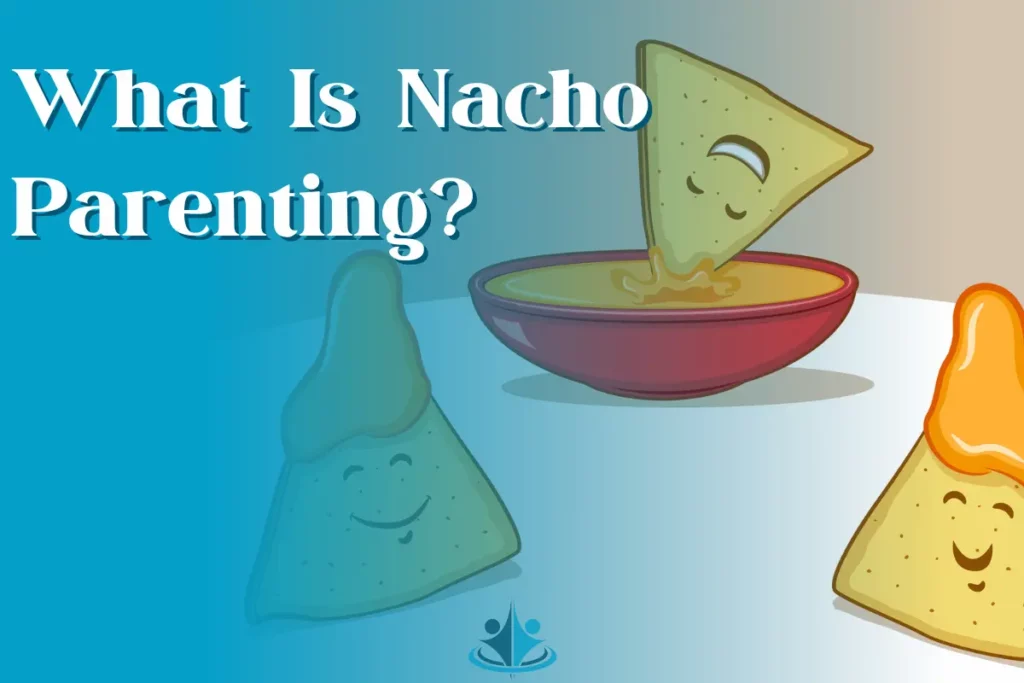Nacho parenting allows the biological parent to discipline their children without the stepparent interfering. It means the stepparent should step aside and let their spouse take charge of their children. The stepparent should act as a babysitter whenever the biological parent is absent.
Nacho parenting has gained popularity among stepparents and might have resulted in lasting marriages. It is a fairly new terminology that helps stepparents bond with their stepchildren. What is Nacho parenting?
Is Nacho parenting an effective method in blended families? Read on to discover the pros and cons of Nacho parenting and examples of how to implement the strategy.

Related Reading: What Is Scaffold Parenting? [A BRIEF GUIDE]
What Is Nacho Parenting?
Basically, the stepparent must realize that it is “nacho your child.” Your stepchildren are the responsibility of their biological father and/or mother. Blended families can be challenging to maintain both for the parents and children.
To make it easier for the family (stepparent, biological, and children), the stepparent should avoid getting on the “bad side” of the stepchild and direct all questions and misbehavior to the biological parent, so they can deal with their child and how they deem fit. Your stepchildren and spouse will appreciate what you do for them more.
Stepparents can still support and help their stepchildren if their biological parent needs them to. You might get irritated or frustrated that you cannot step in and help your stepchildren behave, but it is not your responsibility at the end of the day. Your stepchildren will most probably like you less since they will feel like you are trying to take the position of their other biological parent.
An Analysis Of The Nacho Parenting Method
To fully understand what the nacho parenting method entails, have a look at this list that provides a more comprehensive description.
- Steer clear of unpleasant and unhealthy interactions with your stepchildren.
- Try to step aside when the biological parent disciplines your stepchildren.
- You are not their biological or legal parent; therefore, you have no say in their behavior or your spouse’s parenting style.
- Engage with stepchildren on a level that will make both the stepparent, stepchildren, and biological parent comfortable.
- Avoid contact with your significant other’s ex-partner.
- Act as the children’s babysitter when the biological parent is absent.
- Say nothing unless you have something nice to say about your stepchildren.
- Support your partner while they take on their parenting role but do not cross boundaries.
Nacho parenting does not mean the stepparent should avoid or ignore their stepchildren altogether. You can still have a healthy relationship with your stepchildren regardless of the rules of nacho parenting. It is just a different approach stepparents take to disengage.
You can still create a bond with your stepchildren. The harsh truth is that kids seek their parents’ acceptance and approval, so your stepchildren might not care about your opinion or praise. However, treat them as if they are your best friend’s child or your little niece/nephew.

Examples On How To Use The Nacho Parenting Method
Here are a few examples of nacho parenting:
- If the stepchildren ask something of you politely, tell them they should ask their parent/s permission or help.
- Do not participate in the discussions and decisions of the biological parents regarding their children.
- You can love and care about your stepchildren but do not get too comfortable by assuming you have authority over them.
- If you interact and communicate with your stepchildren, especially about serious topics, ensure that you inform their parents about your discussions.
- Do not try to change the children.
The Do’s And Don’ts Of The Nacho Parenting Method
What are your boundaries with your stepchildren? Let us look at the dos and don’ts of nachoing.
The Do’s Of Nacho Parenting
- Allow your spouse privacy when they deal with their children.
- If the biological parent is not present, the stepparent should care for their stepchildren’s needs.
- Think before you speak or raise your voice. If you feel disrespected, go to your spouse so that they can address it with their children.
- Treat your stepchildren with kindness and give them praises.
The Don’ts Of Nacho Parenting
- Do not pick up after the stepchildren or scold them to do their chores.
- Do not interact with the stepkid unless it is out of kindness.
- Do not nag your spouse about how annoying their children are.
- Do not pick up or drop off the children without the parent’s consent or knowledge.
- Do not get upset when your spouse wants to spend time with their children.
- Do not disrespect your stepchild by doing things that make them uncomfortable.

The Pros And Cons Of The Nacho Parenting Method
What are some of the advantages and disadvantages of the Nacho parenting method? Let us have a detailed look.
The Pros Of The Nacho Parenting Method
The nacho parenting method may sound like the stepparent does not care about the stepchildren; however, it is not true (well, in some cases). It can create a balanced and healthy blended family where everyone is happy. Here are five pros of nacho parenting:
- There will not be conflict between the biological parents and the stepparent with regard to the children.
- The biological parent will not feel like they have to choose between their children or their spouse (stepparent).
- It allows the stepparent to build s relationship with their stepchildren.
- The stepparent does not have to control their stepchildren’s lives or take on the responsibility of the biological parent.
- No one has to hear how much the stepparent disapproves of their stepchildren and vice versa.
The Cons Of The Nacho Parenting Method
We have established the advantages, but what are the disadvantages of the nacho parenting method? Here are five cons of nacho parenting:
- You cannot parent your stepchildren as if they were your own biological children.
- You cannot interfere in discussions with the biological parent about the children’s behavior even if you think their parenting style is ineffective.
- Just because the biological parents want to use the nacho parenting method does not mean the children will approve of it. Some stepchildren will feel like they are a burden to their stepparent or the stepparent despises them when it is far from the truth.
- If the biological parents are not cordial with one another, it can cause friction between the stepparent and stepchild. Often fights between the divorced parents are about the stepparent, and the children will end up blaming the stepparent for their parents’ conflict. Unfortunately, you cannot do much.
- Although your approach sounds better, you cannot make resolutions on behalf of the biological parent/s.
Why Would Stepparents Want To Use The Nacho Parenting Method?
Trying to parent a child with two biological parents who take care of them is tiring. By using the nacho parenting method, stepparents do not have to worry over the actions of their stepchildren, and they can simply let the biological parent take the lead. So, most stepparents happily agree to this arrangement.
Does The Nacho Parenting Method Work For All Blended Families?
The nacho parenting method does not work for all blended families. It depends on the family structure and what approach is better for the stepchildren. Sometimes the biological parent wants the stepparent to be more involved in the lives and behaviors of their children.
Conclusion
Nacho parenting is a new method that blended families implement in their households. The stepparent allows their spouse to discipline their children without interfering or causing conflict between the biological parents by jumping into discussions about their children.
Stepparents must know that maintaining blended families can be complex. Sometimes, most problems arise from the stepchildren, their biological parents, and the stepparent trying to take over the position as the children’s new guardian. Step aside and let the biological parents do the parenting. Your stepchildren are not your responsibility.

